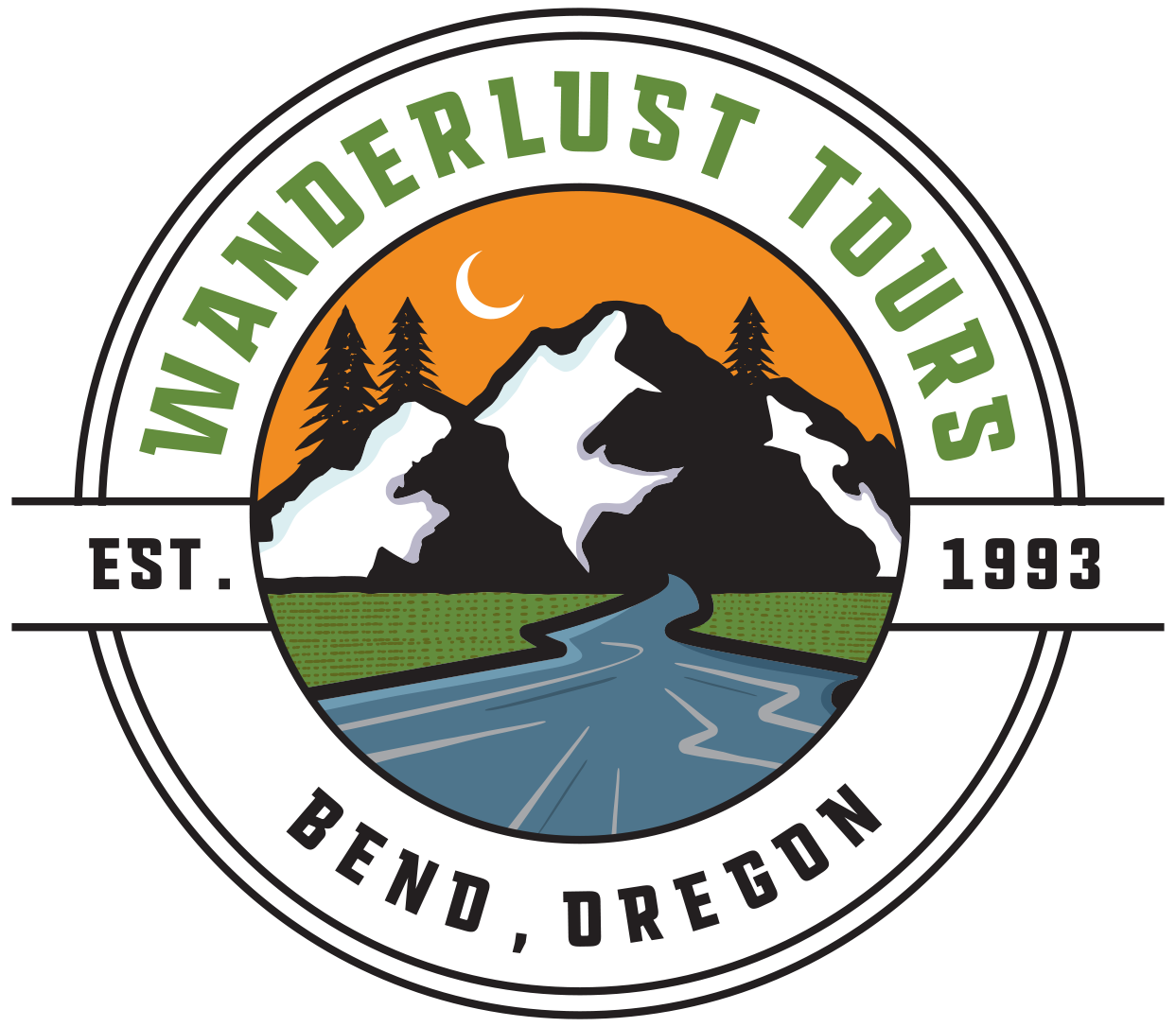Last week, the Wanderlust staff ventured out to DD Ranch in Terrebonne as part of our Summer Speaker Series where we aim to enrich and educate our guides and staff on the ecosystems, people, and professions that make Central Oregon the amazing area that it is.
DD Ranch raises 100% grass fed and grass finished beef and lamb, heritage pork, eggs from free-range hens, and raw honey from happy bees. The ranch follows organic practices - they do not use sprays or chemical fertilizers on their pastures, nor do they use hormones or antibiotic feed for their livestock. They also work with the Savory Institute to employ regenerative pasture management practices.
The ranch itself is stunning with Smith Rock State Park providing an incredible backdrop. During our tour and discussion with Linda, the owner of the ranch, we discussed the vitality and variety of their pastures, the immense importance of the water they use to grow their pastures and feed their livestock, and the methods with which they raise their livestock.
Cattle
The cattle at DD Ranch spend their lives grazing and eating grasses such as Alfalfa. An important part of the process that is regenerative pasture management is pasture rotation. This process of pasture rotation allows the grasses to regenerate and not become overgrazed. When a pasture is overgrazed or grazed too early (meaning the grasses aren't given enough time to grow - both above the ground and the root systems below the ground), it takes significantly more time, energy, and resources to get the pasture back to a healthy level. Also, when pastures are overgrazed, invasive species and fast growing weeds are able to flourish and pull water and nutrients from the grasses that are both natural to the region and ideal for the cattle’s diet.
Overgrazed pastures lead to poor soil quality, which in turn leads to less grass, and the cycle continues. When you allow grasses to grow to the proper level and manage the time the cattle spend feeding on a given area by moving them from pasture to pasture, you allow the root systems and soil to become more robust. More robust soil leads to better grass growth, and so on. As the cattle stomp around while they graze, they aerate the ground, introduce new nutrients into the soil with their droppings, and also kill weeds. It is the same natural process that bison followed hundreds of years ago when millions of bison would graze on swathes of land, stomp around, and then move to the next fresh pasture.
Pasture grazed cattle also lead to healthier, happier cattle and better quality meat. Grass fed and finished beef contains 2-5 times more omega-3 fatty acids compared to grain fed feedlot beef. Grass fed beef also contains more antioxidants compared to grain fed beef.
A few other interesting facts:
Cows don’t have top front teeth. They actually use their tongues to pull the grass and rip it. This makes a strong root system that will stay in the ground even more important!
The root system of grass is typically the same depth as the height of the grass above ground so taller grass means longer, stronger roots.
Grass fed and grass finished means that during their entire lives, the cattle are eating grasses. Some farms will finish their cattle on a grain diet a few months before they are processed which promotes fast weight gain. Most feedlot/ factory farming operations feed their cattle grain only.
Linda does not lease public lands for cattle grazing. Part of her reasoning behind that is because she really can’t manage or control the grazing levels of those lands compared to her private land.
Pigs
After discussing the pastures and cattle, we moved on to the pigs. At DD Ranch, pigs spend their lives in the outdoors soaking up the sunshine and playing in the mud. One very interesting thing we learned is that pigs raised outdoors have significantly more vitamin D in their meat. Historically, pork lard had been the largest dietary contributor of Vitamin D for people. Vitamin D is a key vitamin for people and a vitamin that 70% of the US population is deficient in. Today, conventional large scale pig farming means pigs spend most of their lives indoors in confined spaces. As a result, vitamin D is not a factor in the nutrition of their meat.
A story Linda shared with us that both points to the negatives of factory farming and the value of responsible and regenerative farming had to do with the processing shortage that occurred during covid. Because large processing facilities were shutting down due to covid outbreaks, there was a surplus of livestock with nowhere to go. DD’s took in a few young pigs that were raised in a conventional style up until that point. Linda shared with us that having lived in confinement up until that point, the pigs were very uncoordinated and were not adapted to deal with sunlight at all when the ranch first got them. After some time, the pigs grew stronger and got used to spending their time outdoors and running around with the other pigs!
Water
One of our last topics of discussion had to do with the challenges that come with operating a ranch in Central Oregon. The issue we touched upon most was water. Naturally, water is a very important topic in the high desert. The spring rains and extra snowfall in the mountains will certainly help us as we get into summer but even with that extra precipitation, Central Oregon is currently in the midst of a historic drought and with a growing population, water for farming is more important than ever.
DD Ranch utilizes several different techniques for irrigation - flood, wheel line, and pivot. The ranch is continually working toward making their usage of water more efficient. They are a member of the Central Oregon Irrigation District, which holds some of the largest and oldest water rights in the region. COID has also been working on piping projects to make the transfer of water more efficient.
Supporting DD Ranch
If you want to support DD Ranch and other local ranches and farms, the best way to do that is simple: buy their products. DD’s footprint is mostly local, selling honey at several local grocery stores, and other goods at farmers markets. They also sell direct to consumer, and you can get their products by being a CSA member. Alongside their meat, eggs and honey, they also host events at the ranch and grow pumpkins and various gourds for the fall season.
Below are places you can find DD Ranch’s products:
GROCERS, FARMERS MARKETS, ETC.
Agricultural Connections- Meat and Honey
C.E. Lovejoys – Honey
Central Oregon Locavore- Meat, Bone Broth and Honey
Everly After – Elderberry syrup
Fair Feed - Honey
Food 4 Less- Honey
Logan's Market - Honey
Mahonia Gardens Farm Stand - Honey
Market of Choice - Honey
Newport Market- Honey and Bone Broth
Oliver Lemons - Sisters- Honey
Oliver Lemons Terrebonne- Honey
Orange Mama Fruit Stand – Honey
Oregon Feed & Irrigation - Honey
Oregon Steak Co. - Meat
The Root Cellar-Honey
Tumalo Farmstand - Meat
Wilco Bend - Honey
Wilco Prineville - Honey
Wilco Redmond - Honey
Winco Bend - Honey
RESTAURANTS AND CAFES
Broken Top Bottle Shop & Ale Café
The People’s Pies
Terra Kitchen
Flights Wine Bar




